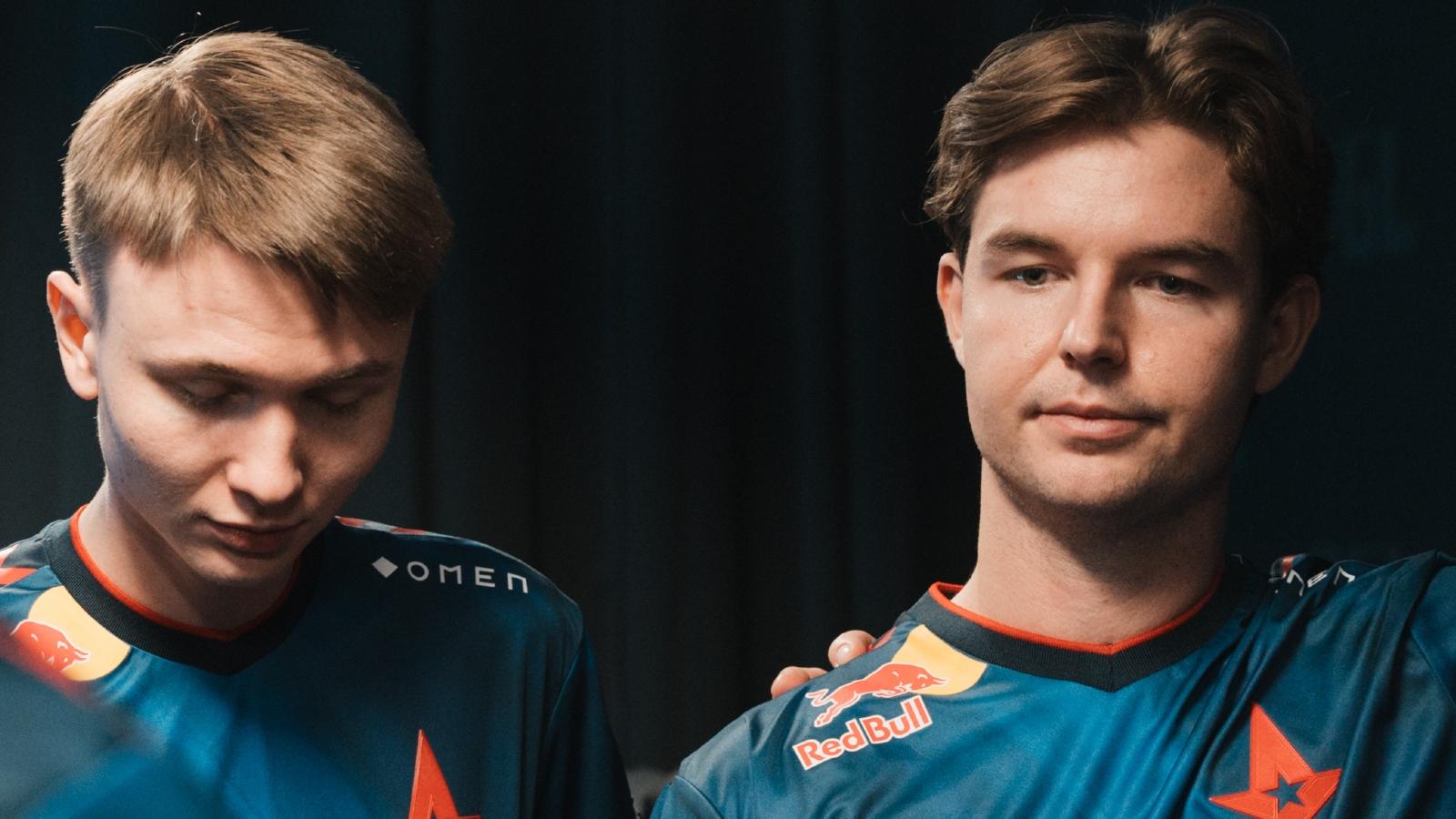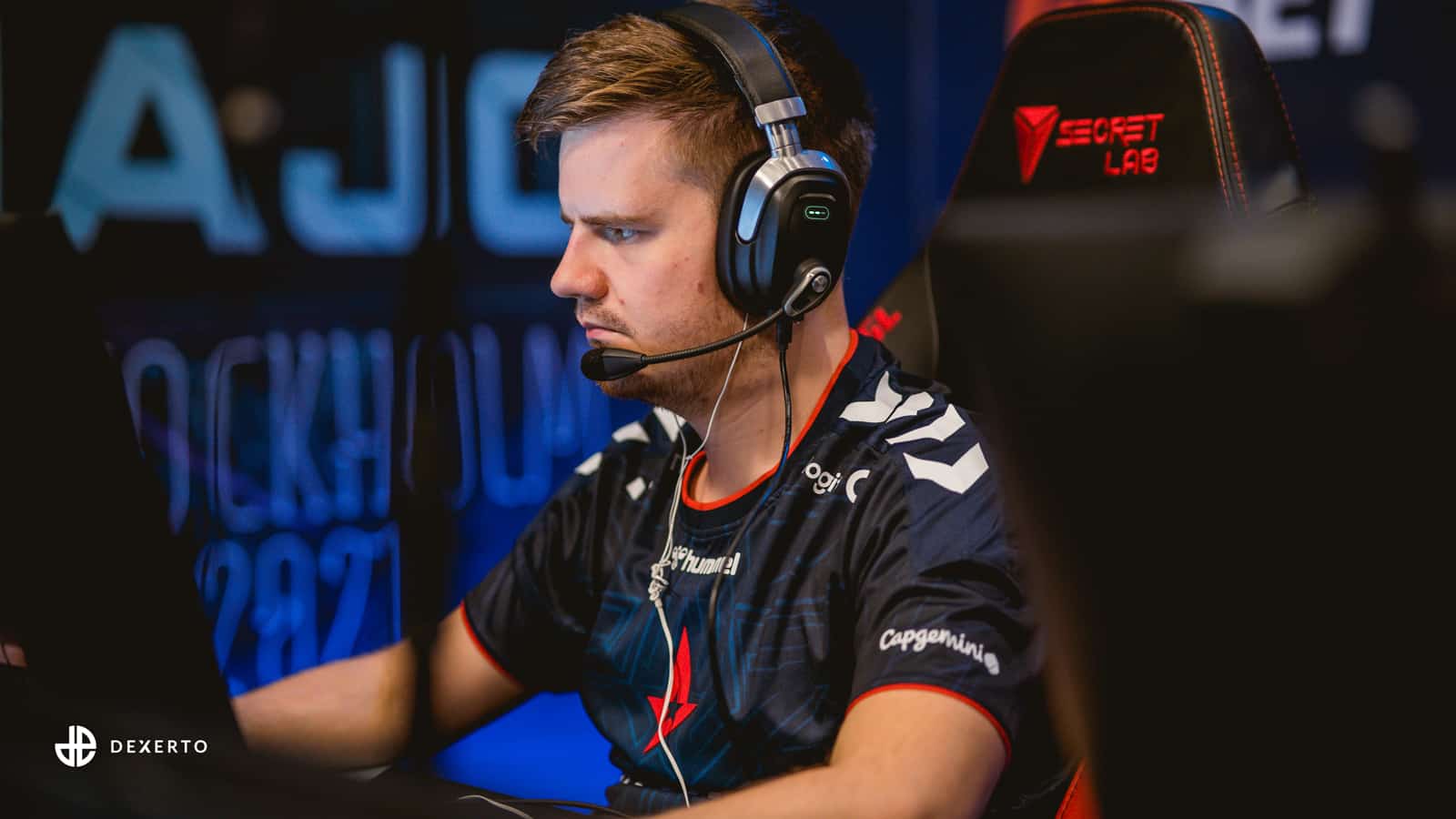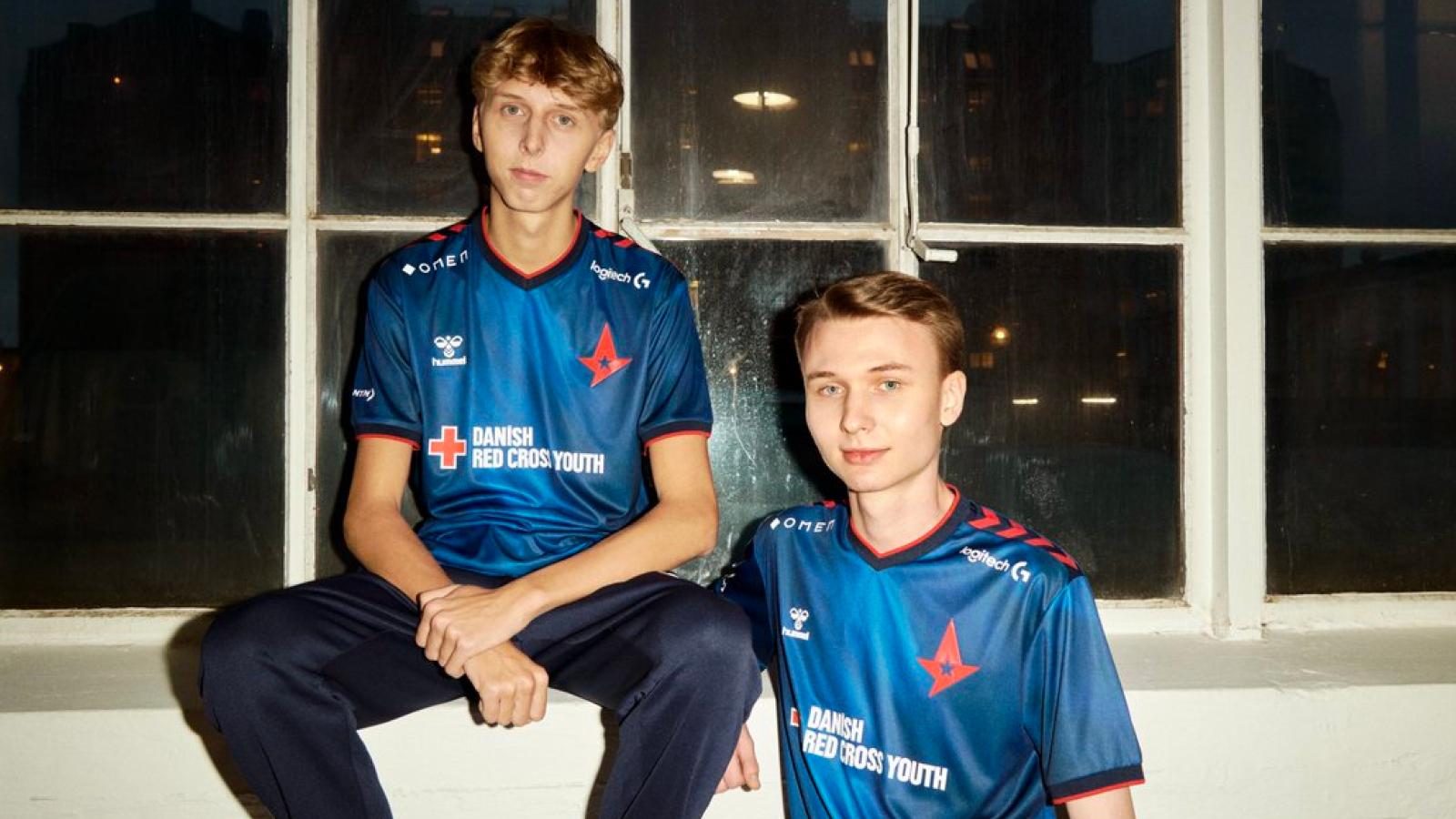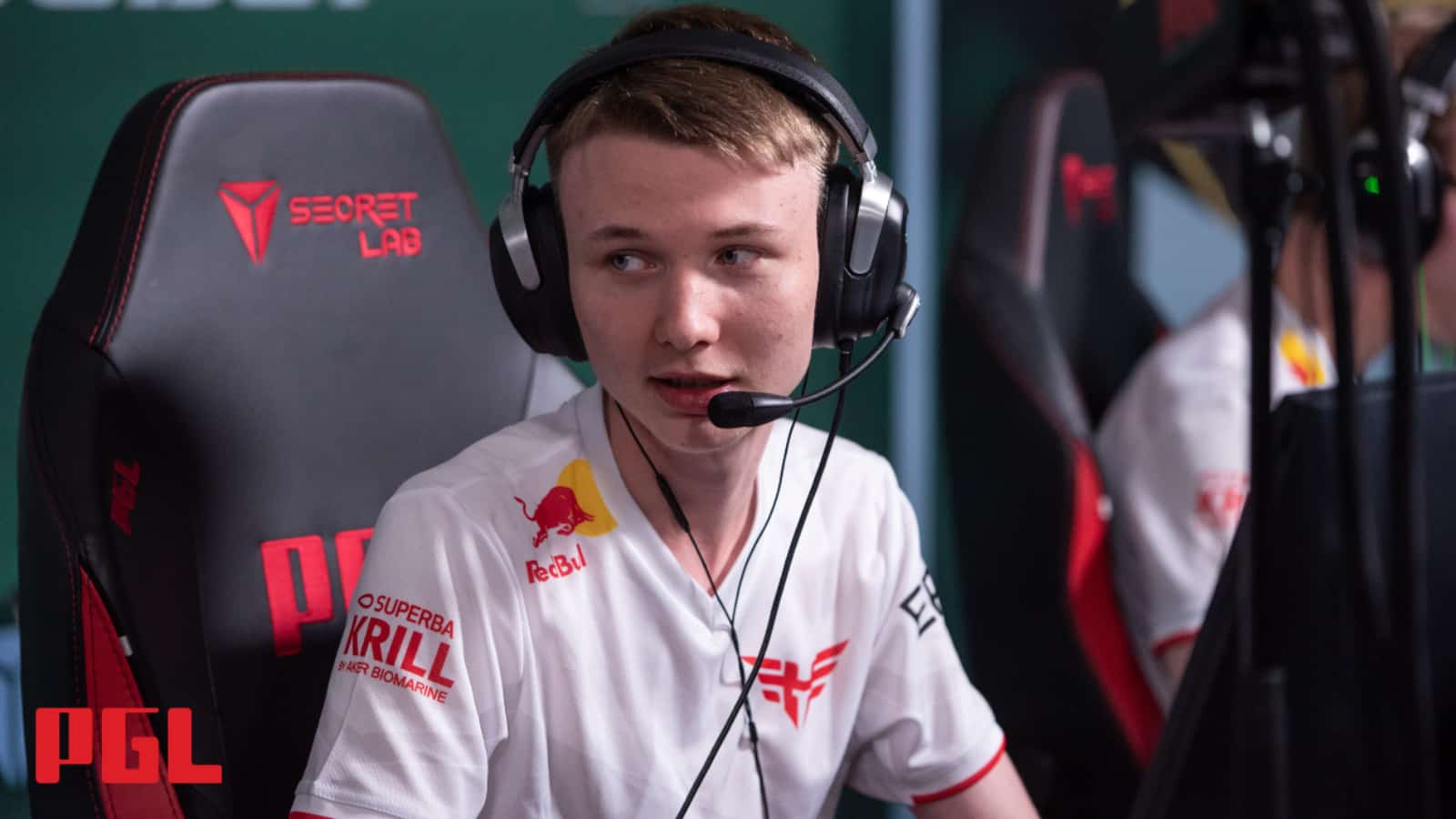Stuchiu’s Standpoint: Prime Astralis is not post-Berlin Astralis
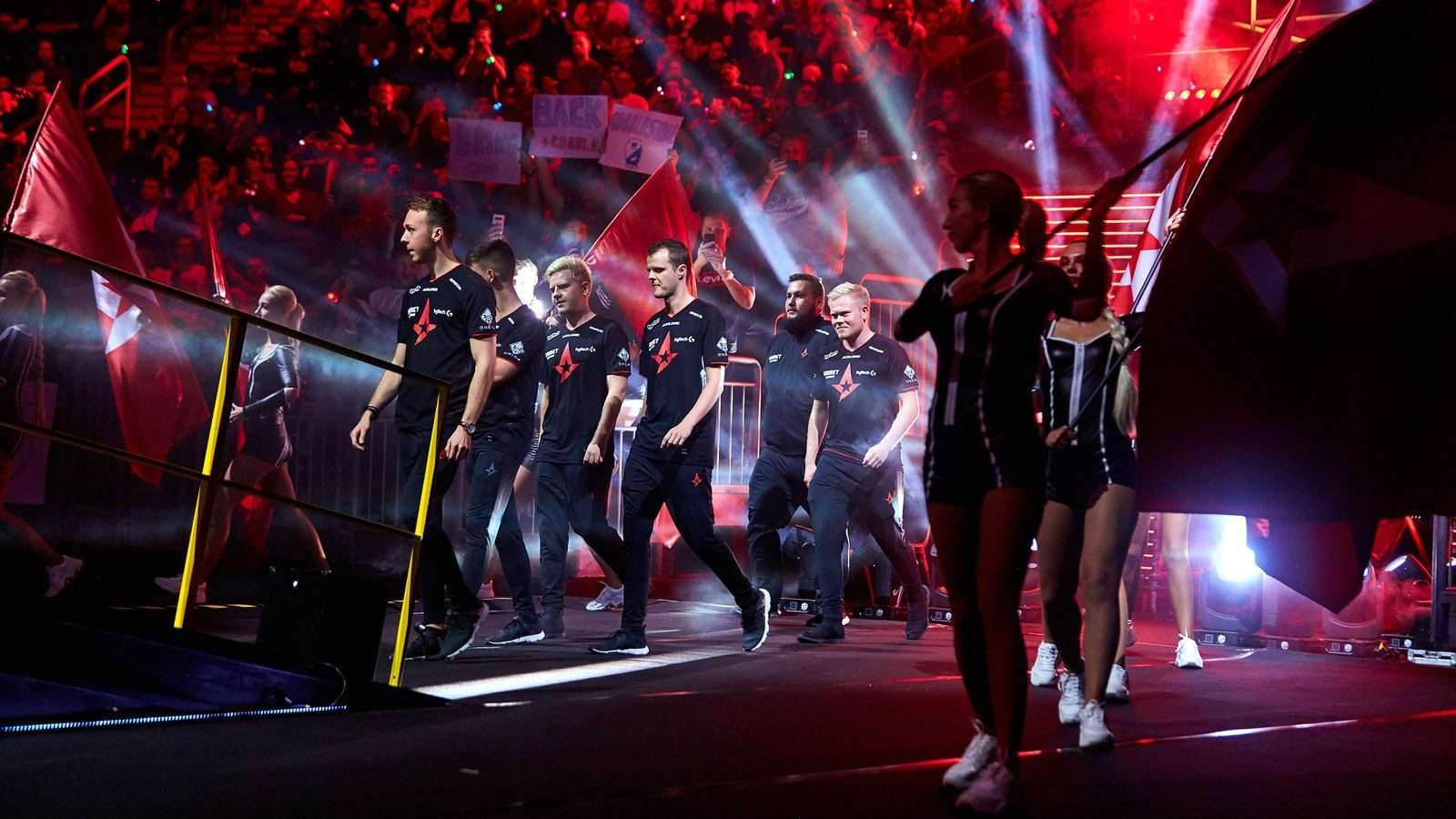 StarLadder
StarLadderAfter Astralis won their third Major in a row, fans hailed it as a resurrection. As if Counter-Strike. This Astralis shares the same players, the same methodology, and the same mindset, but is a markedly different animal than before.
[ad name=”article1″]
Prime Astralis
From DreamHack Marseille to the IEM Katowice Major 2019, Astralis were an unstoppable Counter-Strike machine. If there was ever a platonic idealization of what perfect Counter-Strike looked like, that Astralis lineup was it. Each player had a specified role the excelled in. Nicolai ‘dev1ce’ Reedtz was the mobile AWPer who defined their CT-side. He was excellent at creating a multitude of safe picks that let him get free shots off while minimizing potential retaliation. He also doubled as a rifler on the T-side and his all-around game slotted him perfectly into the system regardless of whether he was on the AWP or rifle.
Peter “dupreeh” Rasmussen and Lukas “gla1ve” Rossander were the aggressive riflers. They were in charge of making the more volatile and risky plays to secure information and map control. Dupreeh has a higher skill ceiling while gla1ve was more likely to win his duels through game sense and intelligence. Andreas “Xyp9x” Hojsleth was the perfect support player. Someone who took up the undesirable spots, enabled his teammates in the 3v3s, and was the master of clutch situations. Emil “Magisk” Reif rounded out the team with an emphasis on the lurk role and CT-side anchor. He could also be integrated into the entry pack in site hits on the T-side.
[ad name=”article2″]
Outside of their perfected roles which harmonized together to create a greater whole, the team was also the epitome of teamplay and tactics. They innovated the utility meta shift in 2018 as they honed in on the best ways to use grenades. Astralis’ utility usage often led to man advantages as they either blew someone up with HEs or used their utility to isolate a player, blind him, and then win the favorable duel.
In a neutral scenario where they didn’t get an outright man advantage, they were often getting map and information advantages. Each piece of utility they used gave them a piece of information which filtered into the minds of the players and let them read the map flawlessly. From there they could either frustrate the offense by throwing down the perfect last minute smoke grenades which disrupted a hit, or intuit the best way to break a site if they were on the offense. In the worst case scenarios, their utility usage still did psychological damage as teams were afraid of running into stacks and this delayed their own map control or ceded info to the Danes.
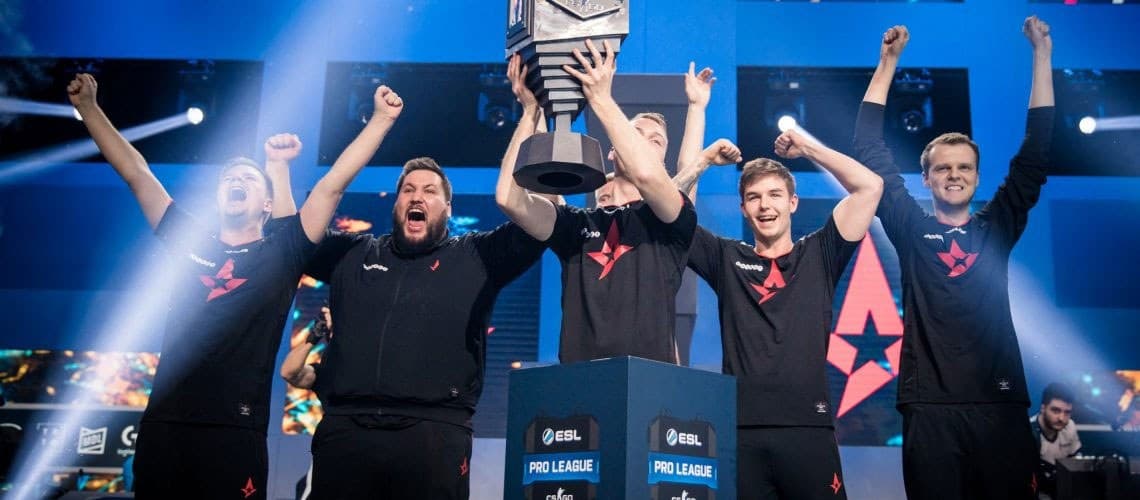 Astralis claimed the 2018 Intel Grand Slam during their prime
Astralis claimed the 2018 Intel Grand Slam during their primeTo understand the might of Astralis, I will have to take a leaf from Team Liquid’s book. Liquid players often model their performance as: A-game, B-game, and C-game. The A-game is when they play at their absolute best, the B-game is their average day, and the C-game is their worst day. Astralis’ C-game was enough to beat about 90% of the competition during that time frame. Their victories were almost comical in how dominant they were in terms of teamplay and tactics.
The only time I ever saw the team truly struggle and have to dig deep into their reserves during this entire period was at IEM Chicago where they had a lousy group stage and had to step up to the moment when Fnatic had them on the ropes. Astralis’ form in that tournament is the only time where you can draw comparisons between prime Astralis and the Astralis of today.
[ad name=”article4″]
Astralis now
The Astralis now is different from their prime form in multiple ways. The prolonged break they took in 2019 and the AUG nerf hit them hard. In terms of individual form, both dupreeh and gla1ve suffered massively during this period. The AUG meta hurt the efficacy of all entry-fraggers and dupreeh in particular never hit the same heights when the meta was in full swing. Gla1ve also suffered under the same time frame. In gla1ve’s case, I suspect it’s less of the AUG meta and more that the team was no longer leading the meta.
During their prime, the team consistently found new ways to innovate their map pool and utility usage across the maps. This tactical advantage seemed to translate into gla1ve’s individual form as he could read and crack open enemy formations when the team was in control of the game. That advantage stopped existing as the paradigm shift ended. Enemy teams started to catch up and copy the Astralis meta and Astralis themselves no longer held a significant tactical advantage. This evened the field and made it harder for gla1ve to do be as impactful as he was in 2018.
[ad name=”article5″]
Xyp9x also dropped off from his godlike levels of 2018. In 2018, he was winning an unreal amount of clutches and late round scenarios. That was never sustainable, so it made sense that after the break Xyp9x couldn’t continue that level of form. The only two players that were close to their prime levels were dev1ce and Magisk. Dev1ce continued to be a top 5 player while Magisk was still a star player within his designated roles.
Outside of the individual form, the way Astralis won games at the StarLadder Berlin Major, ESL One New York, and DreamHack Malmo were different than prime Astralis. In their prime, they dominated with sheer tactics and teamplay. They played theoretically perfect Counter-Strike and used the highest +EV plays possible.
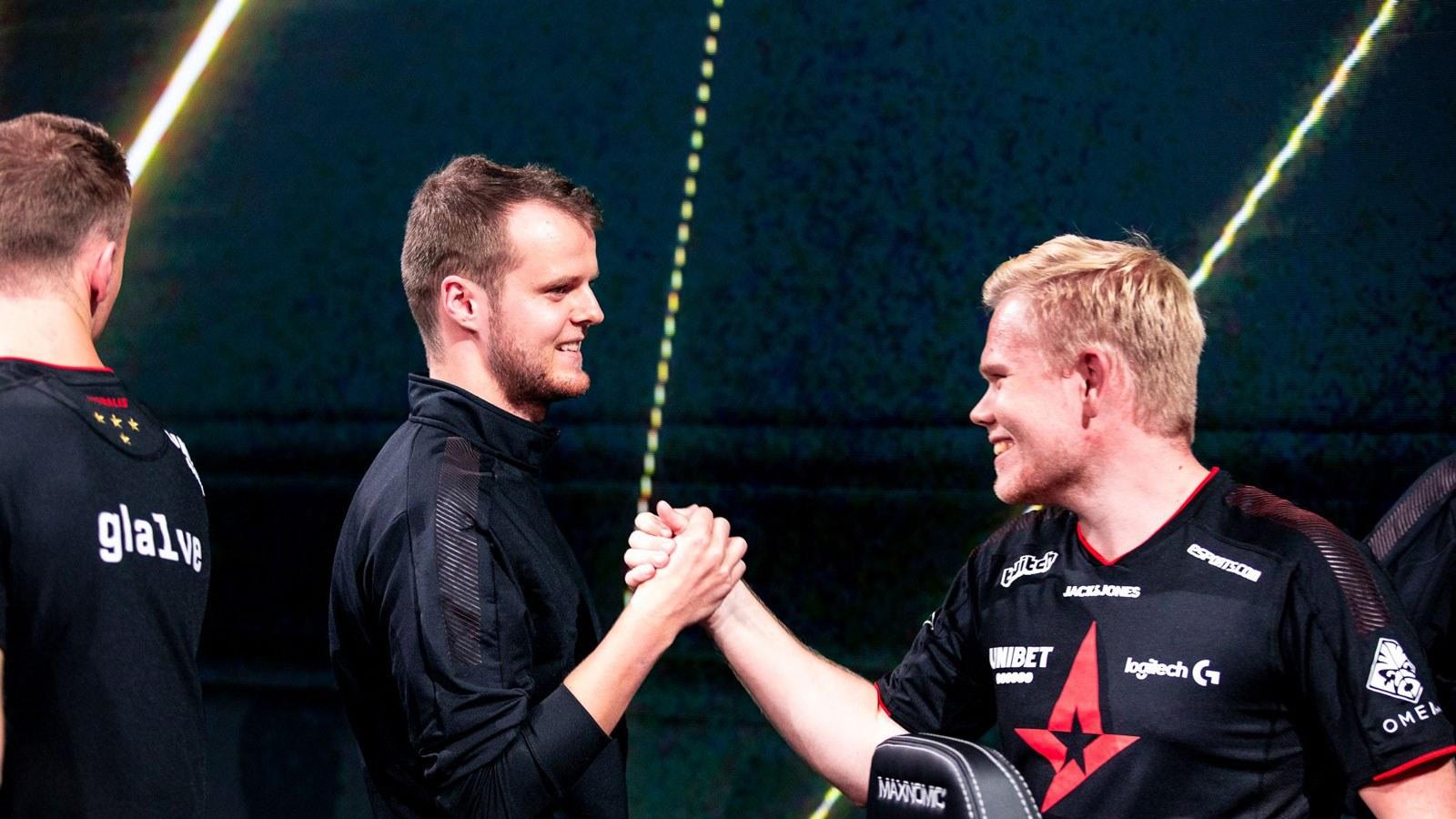 Astralis celebrates a win over Liquid at ESL One NY
Astralis celebrates a win over Liquid at ESL One NYToday’s Astralis is different. Positionally and tactically speaking, this version of Astralis can still be in the same positions, but they no longer win the same duels. Teams like Liquid and Evil Geniuses can guarantee trade kills with their mechanics, whereas Astralis’ declining firepower makes it harder to guarantee those kills. In response to this, Astrails have started to add more explosive and risk-oriented tactics into their playbook to throw off and confound other teams.
While these plays are riskier in theory, they increase the potential reward as well. If Astralis succeed with these plays, they can win a round. The crucial thing though is that even if they don’t win, they force a macro response across a half draws enemy resources throughout the half.
For instance, if an Astralis player pushes through a smoke dry, the other team will have to be aware of the fact that Astralis are willing to make those types of plays and react accordingly. This will cost mental resources and utility as well. The best example of this shift in mentality was the Astralis vs. Liquid semifinals of ESL One NY. On the T-side of Vertigo, Astralis started to use tactics that were more in line with Liquid’s philosophy. In the 7th round of the half, gla1ve walked up the ramp, dry peeked into Jake “Stewie2K” Yip and tore his head off. In the eighth, gla1ve pushed through the smoke at ramp and with no utility backup, snuck into the site and killed Nicholas “nitr0” Canella.
The Astralis of 2018 used utility to get kills, take map control, or create advantageous duels. What gla1ve did here was play hero ball as he gambled entire rounds on his ability to read the gaps of the defense to break the other team.
A Different way of Losing
Not only are the character of their wins different, so are the losses. Astralis barely lost in their prime. When they did lose, it required miracles. FaZe pulled out the closest 3-0 victory ever at IEM Sydney. It took the combination of Oleksandr “s1mple” Kostyliev and Denis “electronic” Sharpiov’s peak forms and Danylo “Zeus” Teslenko having the best game of his life in the last few years to stop them at Cologne. At DreamHack Stockholm, Mathias “MSL” Lauridsen had to watch over a 100 demos and be the MVP of the tournament to beat them.
Astralis of the present day have the number one ranking, but other teams can blow them out. At ESL New York, EG smashed them in the finals 3-1. EG were in fantastic form that event, similar to FaZe at Sydney, Na`Vi at Cologne, and North at Stockholm. The difference was that in order to beat peak Astralis, you needed to be at that form and even then you could lose. A few rounds in the other direction could change the final outcome between the Astralis and Na`Vi/FaZe matches.
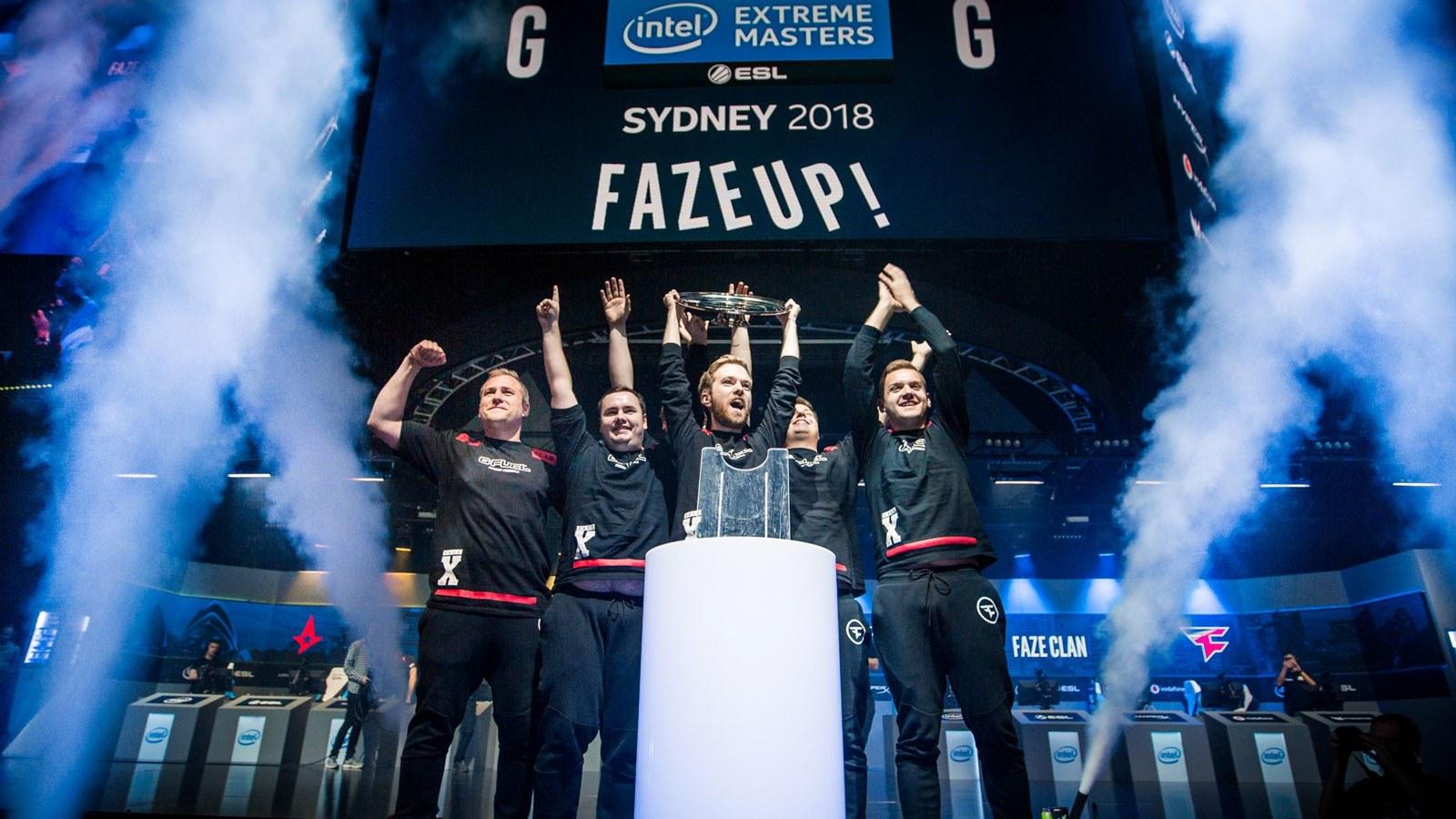 FaZe lift the IEM Sydney 2018 trophy after a 3-0 sweep over Astralis
FaZe lift the IEM Sydney 2018 trophy after a 3-0 sweep over AstralisThe same cannot be said for the finals at ESL New York where EG were the convincing victor. At DreamHack Malmo, Fnatic did pull out miracle plays in the second map, but it would be impossible to imagine Astralis ever losing Nuke in their prime. Finally, Astralis get into a way closer series than before. In the past, Astralis used to sweep teams 2-0 and often stopped them from getting to double digits on any single map. The Astralis we see now constantly has to battle for every inch they can take.
The Shifting Map Pool
The biggest indicator of how Astralis has changed is the map pool. In 2018, Astralis were gods on Nuke and Inferno. Their LAN record from the start of this lineup to Katowice was 29-0 on Nuke and 36-13 on Inferno. Outside of that their “middling” maps were Dust2 and Train. I say middling as they had a ridiculous winning percentage on both, 15-2 on Dust2 and 11-5 on Train. Their problematic maps were Mirage and Overpass with records of 20-9 on Mirage and 18-9 on Overpass. Their permaban was Cache, which they were 5-3 on.
- Read more: How to play the new Cache rework
The Astralis I saw at Berlin and after are a different team map pool wise. They have largely relegated Nuke to the back burner. Inferno used to be their home map, but they’ve started to avoid playing it against top teams. They second rotation banned it against Liquid at New York. They played it twice against EG and lost it both times. They went 12-16 in the group stages and got smashed 3-16 in the finals.
Astralis right now seem to be a better team on maps like Overpass, Train, and Vertigo. Their Dust2 is still fairly strong, but is dangerous to pick against highly skilled teams like EG and Liquid. While Astralis are still willing to play Nuke and Inferno, neither map is a guaranteed victory like it was in the past.
Astralis’ map vetoes signal that their own realization of their changes through this time period. In the past, the Astralis map veto was fairly distinct. Ban cache, pick nuke and/or a punish pick, clean up on Inferno. Astralis now have to play mind games in the map pool. They ambushed Liquid with a Vertigo pick at the Major. Against EG, they have a fixed permaban of Mirage, but have tried different picks going into them. At the Major they used Overpass. At ESL New York, they’ve tried Inferno both their encounters. At Malmo it seems like Astralis have settled on banning Mirage as their perma-ban.
Distinguishing the past from the present
All things considered, the Astralis that is playing now is a different animal from before. Even so, there are still certain similarities that have carried across the two time periods. The core strengths of the players and style are fundamentally the same. They still play their best using the tactical structured system with set roles. Second, the mental strength and clutch factor continues to run strong in the team. In the prime Astralis Era, we saw this at IEM Chicago and it has carried on in their runs at Berlin StarLadder Major, the semi-finals of ESL One New York, and arguably Malmo where they hung in the semi-finals despite the Fnatic bull***t. The third is their ability to stay a step ahead at tactical innovation.
At StarLadder Berlin Major, Astralis used an aggressive two man setup and flanks to stifle the Liquid T-side. At ESL New York, Astralis used a three man setup on the A-site to stonewall Liquid’s attempts to get any map control out onto the map. While not as comprehensive or as far ahead as before, Astralis are still tactically innovating the meta.
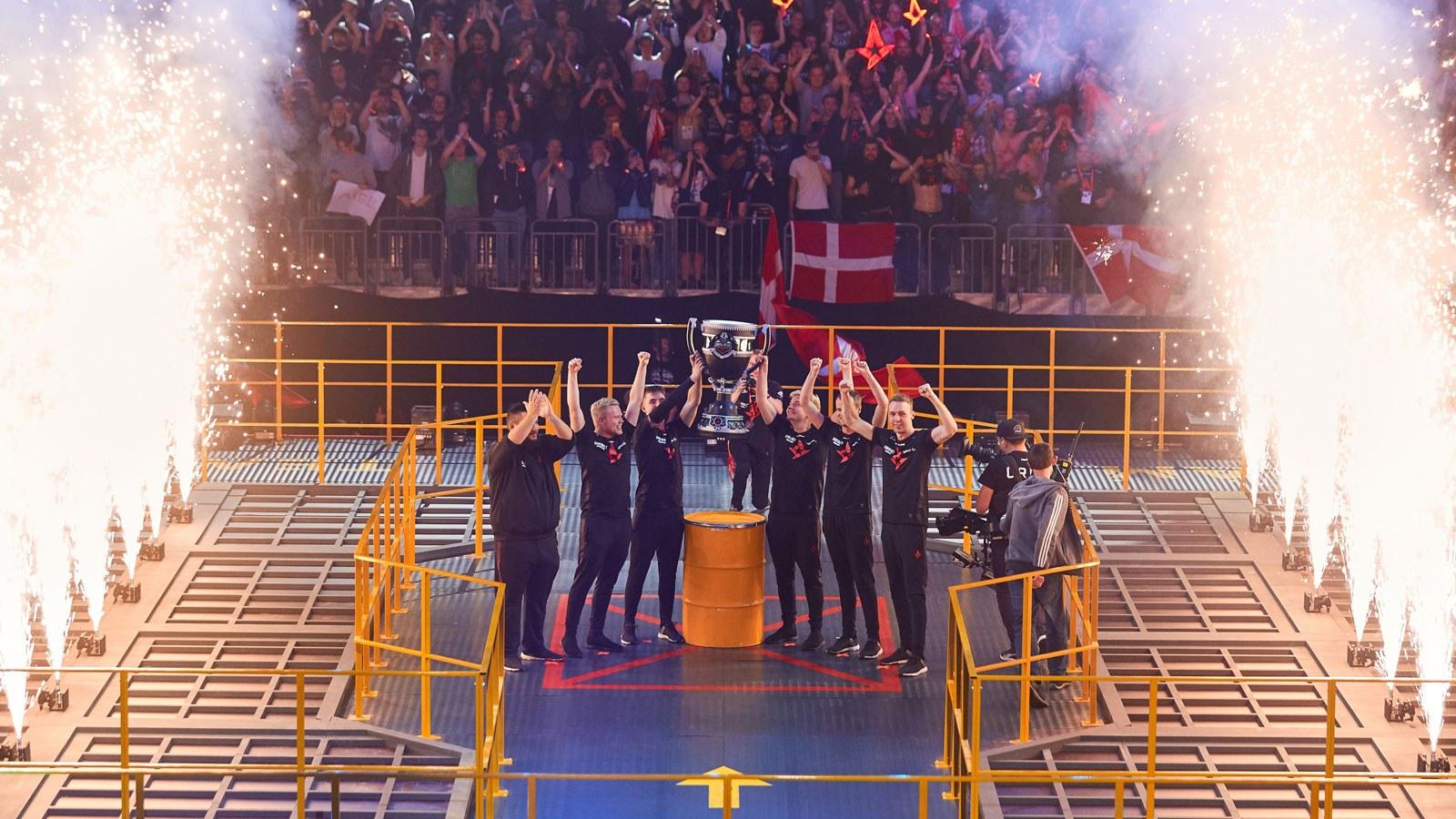 Astralis hoist the StarLadder Berlin major trophy
Astralis hoist the StarLadder Berlin major trophyOutside of those similarities, everything else has started to change. The individual forms of the players are fluctuating, the map pool has shifted, and even their home map of Inferno seems to be diminishing in front of our eyes. For me, this is one of the most exciting times to spectate Astralis as a squad and why I want to make a clear distinction between who they were at their prime and who they are now. Astralis in their prime were perfect CS:GO playing machines. The Astralis we see now still have the core essence of what made them great, but are diminished in stature.
While it is easy to conflate both versions of Astralis, by doing so we do a disservice to Astralis of both time periods. Prime Astralis was absolute perfection and a team that looked like they solved CS. Current Astralis has transformed and resurrected themselves in a way that almost no line-up (outside of classic Virtus.Pro) has ever accomplished. Each time period shows a different attribute of excellence that further extends their legacy as the greatest of all time.
